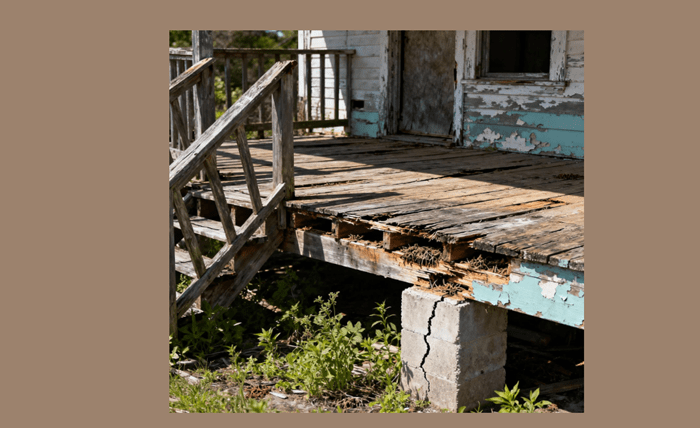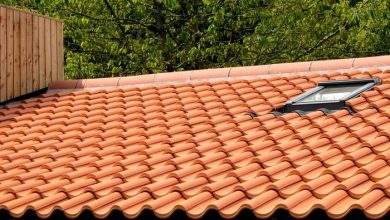
You’re staring at your deck again. That same corner board is loose, the railing wobbles a bit more than last year, and honestly, you’re wondering if another repair is just throwing money away. I get it. The repair versus replace question keeps plenty of homeowners up at night. Let’s break down when fixing makes sense and when you need to accept that your deck has lived its best life.
Should You Fix It? Signs Repair Still Works
If your deck is fairly young (under 10 years), repairs are usually the way to go. Surface stuff like fading paint, a handful of splinters, or minor cracks doesn’t mean disaster. These are fixable issues.
The foundation matters most. If your support beams and joists look solid, you’re in decent territory. Here’s when repairs make sense:
- Your deck is less than 10 years old.
- Only 5 to 10 boards need replacing.
- The damage is surface-level (cosmetic wear, fading, minor cracks).
- Support beams and foundation are structurally sound.
- Repair costs come in under 30 to 40 percent of replacement cost.
- You actually like your current deck layout.
One more thing. If you’re happy with how your deck looks and functions, don’t let a few imperfections push you into a full rebuild. Sometimes, a fresh coat of stain and swapping out damaged boards can buy you another five years without hassle.
Red Flags That Scream “Replace, Don’t Repair”
Now let’s talk about the serious stuff. Structural problems aren’t something you can patch and forget. If your support posts feel soft when you push on them, or sections of your deck sag noticeably, that’s a problem.
Age plays a huge role. Once a deck hits 15 years and starts showing multiple issues, you’re fighting a losing battle. When damage spreads across 40 percent or more of the deck, repairs become pointless.
Major warning signs that mean deck replacement is necessary:
- Rotting support beams or posts that feel soft to the touch.
- Visible sagging or uneven sections (foundation issues).
- Widespread termite or carpenter ant damage.
- The deck is 15+ years old with multiple failing components.
- More than 40 percent of the surface area shows damage.
- Doesn’t meet current building codes (railing height, ledger attachment).
- Rusted fasteners throughout the structure.
- Wobbly railings or unstable stairs.
- You’ve repaired the same spots multiple times.
Here’s something homeowners miss: building codes change. Older decks often don’t meet modern safety standards. Maybe the railings are too low, or the ledger board attachment doesn’t meet current requirements. Bringing an old deck up to code can cost nearly as much as starting fresh.
The Math: When Patching Costs More Than Starting Over
Let’s get real about money. There’s a simple rule: if repairs cost more than 50 percent of a full deck replacement, just replace it. Seriously, do the math.
| Scenario | Repair Cost | Replacement Cost | Better Choice |
| Minor damage, deck under 10 years | $1,500 – $3,000 | $12,000 – $18,000 | Repair |
| Moderate damage, 10-15 years old | $5,000 – $7,000 | $12,000 – $18,000 | Borderline (get pro opinion) |
| Extensive damage, 15+ years | $8,000 – $10,000 | $12,000 – $18,000 | Replace |
Here’s an example. A full replacement might run $12,000 to $18,000, depending on size and materials. If your repair quote comes back at $7,000 or $8,000, you’re spending more than half the cost of a brand new deck to fix an old one. That doesn’t make sense.

Don’t forget about the sneaky costs. Every year, you call someone out for repairs, buy materials, and take time off work. Those $400 fixes add up faster than you think. Grab your receipts from the last three to five years and add them up. You might be shocked at the total.
Here’s the flip side. A new deck adds value to your home. Most replacements return 70 to 80 percent of the investment when you sell. Plus, modern materials like composite decking mean way less maintenance. No more yearly staining or sealing. That’s real savings over 10 or 20 years.
Don’t Gamble With Safety
Some situations don’t leave room for debate. If your deck is unsafe, stop reading and call a professional today. I’m talking about real instability where the deck bounces when you walk on it, railings that feel loose, or visible gaps between the deck and your house.
Think about everyone who uses your deck. Kids running around, guests at summer cookouts, and elderly family members. If someone gets hurt because you knew there was a problem and ignored it, that’s a nightmare legally and emotionally.
Critical warning signs include loud creaking under normal weight, sagging in the middle sections, or posts that have pulled away from their concrete footings. If you see any of these, get a professional inspection immediately. Don’t wait until spring. These problems get worse, not better.
Your Personal Deck Checklist
Still on the fence? Work through these questions:
- How old is your deck? (Under 10 years = probably repairable, over 15 = lean toward replacement)
- What percentage shows damage? (Under 20% = repair, over 40% = replace)
- How much have you spent on repairs in the past five years?
- Planning to sell your home in the next few years?
- Do you actually like your current deck design?
- Are the support beams and foundation solid?
Be honest with yourself. If most answers point toward age, extensive damage, or repeated problems, deck replacement makes more sense. If it’s just a few isolated issues on a newer deck, repairs should handle it.
Getting a pro to look at it helps, too. A good contractor can spot problems you’d miss and give you realistic numbers for both options. Don’t skip this step. Spending $200 on an inspection can save you thousands in the wrong decision.
Bottom Line
The repair versus replace decision boils down to three factors: age, damage extent, and money. Minor issues on a deck under 10 years old? Fix it. Major structural problems on a 15-year-old deck? Time for something new.
Here’s my take: don’t drag your feet on this decision. Deck problems don’t improve with time. What’s a $1,500 repair today could turn into a $4,000 emergency next year. Get an inspection, run the numbers, and make the call. Your outdoor space (and your peace of mind) will be better for it.




